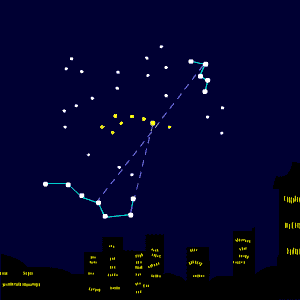Early this morning – what most call night –
I looked to the sky and saw
just a few stars against the blackness
that is not empty but still unseen.
It’s out there. I’m searching for signals.

In my poem, I am searching for more than just stars out there in the universe. But, in cosmology, the cosmic dawn is the first light from the most ancient stars in the observable Universe. That light would have to have traveled for nearly 14 billion years to reach Earth. These are numbers so large that they are incomprehensible – at least to me. The light is also too faint to view directly with ordinary telescopes, but radio astronomers have been looking for an indirect effect, using the spectrum of radio waves. It was thought that they had found that first light, but now there is some doubt.





